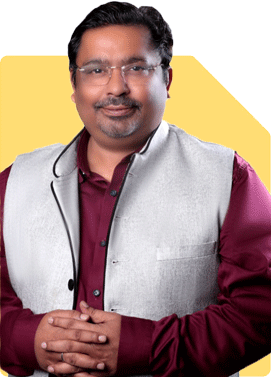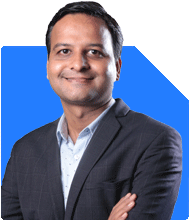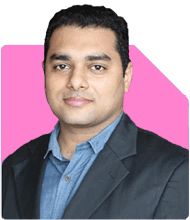50 years old, investing in 13 mutual funds - What should I do for the next 10 years?
Ramalingam Kalirajan |10870 Answers |Ask -Follow
Mutual Funds, Financial Planning Expert - Answered on Mar 15, 2025
He has an MBA in finance from the University of Madras and is a certified financial planner.
He is the director and chief financial planner at Holistic Investment, a Chennai-based firm that offers financial planning and wealth management advice.... more

Hello sir, I am 50 age and investing in the below funds by sip mode: Nippon india large cap - 2000 pm Nippon india multi cap - 2000 pm Nippon india small cap - 2000 pm ICICI prudential flexi cap - 2000 pm MO midcap fund - 2000 pm Mahindra ML large & midcap - 2000 pm Uti nifty 50 index - 1500 pm ICICI Pru nifty next 50 index - 1500 pm Nippon IT index - 1500 pm ICICI bse sensex index - 1500 pm ICICI Pru multi asset allocation - 5000 pm DSP multi asset allocation - 1000 pm SBI retirement aggressive - 1000 pm HDFC balanced advantage - 2500 pm Can I continue the above for the next 10 years OR is there a need for any changes to be made. My current MF investment stands at 20 L Looking forward to you advise please.
Fund Overlap and Diversification
You have too many funds in the same category.
Multiple large-cap, multi-cap, and index funds create unnecessary duplication.
A smaller, well-chosen portfolio will improve returns and reduce complexity.
Index Funds in Your Portfolio
You are investing in four index funds.
Index funds lack downside protection in market crashes.
Actively managed funds have better potential to beat the market.
Consider reducing index fund exposure to improve returns.
Sector and Thematic Funds
You have a technology sector fund.
Sector funds can be high-risk, as they depend on one industry’s performance.
A diversified portfolio is better than relying on a single sector.
If held, sector funds should be less than 10% of the total portfolio.
Multi-Asset and Hybrid Funds
Multi-asset funds help in balancing risk with exposure to equity, debt, and gold.
You have three multi-asset funds, which may be too many.
It is better to consolidate and hold only one or two of the best-performing funds.
Retirement Fund and Balanced Advantage Fund
SBI Retirement Aggressive Fund is designed for long-term wealth creation.
HDFC Balanced Advantage Fund helps in managing market volatility.
These funds are suitable for investors above 50, as they lower risk.
Recommended Changes
Reduce fund duplication by keeping only one multi-asset fund.
Exit some index funds and switch to actively managed funds.
Limit sector funds to a small portion of your portfolio.
Continue investing in flexi-cap and balanced advantage funds for long-term stability.
Final Insights
Your portfolio has good diversification but can be simplified.
Reducing overlapping funds will improve returns and ease tracking.
Shifting from index funds to actively managed funds may provide better growth.
Holding for 10 years is a good strategy, but regular rebalancing is needed.
Best Regards,
K. Ramalingam, MBA, CFP
Chief Financial Planner
www.holisticinvestment.in
https://www.youtube.com/@HolisticInvestment
You may like to see similar questions and answers below
Omkeshwar Singh | Answer |Ask -Follow
Head, Rank MF - Answered on Dec 20, 2019
Ulhas Joshi |280 Answers |Ask -Follow
Mutual Fund Expert - Answered on Mar 28, 2023
Ramalingam Kalirajan |10870 Answers |Ask -Follow
Mutual Funds, Financial Planning Expert - Answered on Apr 23, 2024
Ramalingam Kalirajan |10870 Answers |Ask -Follow
Mutual Funds, Financial Planning Expert - Answered on May 17, 2024
Ramalingam Kalirajan |10870 Answers |Ask -Follow
Mutual Funds, Financial Planning Expert - Answered on Jul 10, 2024
Dr Dipankar Dutta |1836 Answers |Ask -Follow
Tech Careers and Skill Development Expert - Answered on Dec 05, 2025
Ulhas Joshi |280 Answers |Ask -Follow
Mutual Fund Expert - Answered on Dec 05, 2025
Dr Dipankar Dutta |1836 Answers |Ask -Follow
Tech Careers and Skill Development Expert - Answered on Dec 04, 2025
Ravi Mittal |676 Answers |Ask -Follow
Dating, Relationships Expert - Answered on Dec 04, 2025
Anu Krishna |1745 Answers |Ask -Follow
Relationships Expert, Mind Coach - Answered on Dec 04, 2025
Anu Krishna |1745 Answers |Ask -Follow
Relationships Expert, Mind Coach - Answered on Dec 04, 2025
Mayank Chandel |2562 Answers |Ask -Follow
IIT-JEE, NEET-UG, SAT, CLAT, CA, CS Exam Expert - Answered on Dec 04, 2025
Mayank Chandel |2562 Answers |Ask -Follow
IIT-JEE, NEET-UG, SAT, CLAT, CA, CS Exam Expert - Answered on Dec 04, 2025
Mayank Chandel |2562 Answers |Ask -Follow
IIT-JEE, NEET-UG, SAT, CLAT, CA, CS Exam Expert - Answered on Dec 04, 2025
Mayank Chandel |2562 Answers |Ask -Follow
IIT-JEE, NEET-UG, SAT, CLAT, CA, CS Exam Expert - Answered on Dec 04, 2025























